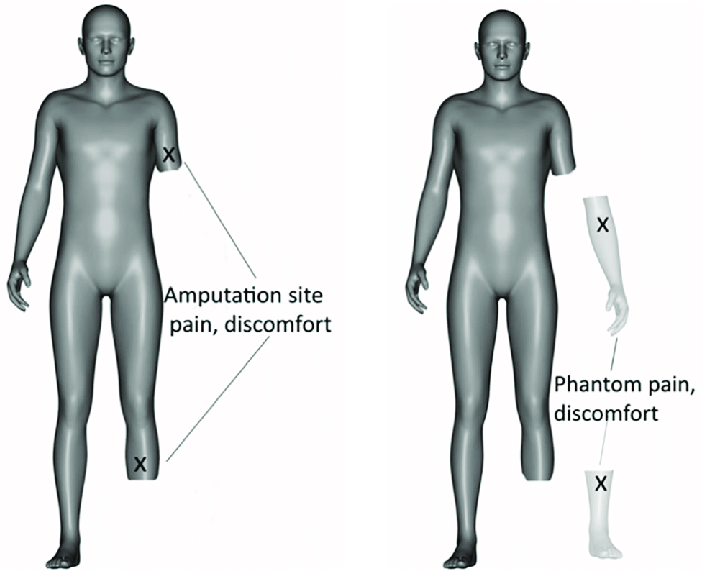Phantom pain, a phenomenon that occurs after limb amputation, remains a complex and intriguing aspect of the human nervous system. Despite the absence of the amputated limb, individuals often experience vivid sensations of pain or discomfort originating from the missing body part. Understanding the underlying mechanisms and strategies for managing phantom pain is essential for both healthcare professionals and those who endure this unique type of pain.
Mechanisms of Phantom Pain:
The occurrence of phantom pain stems from the intricate interplay between the brain, nervous system, and neural pathways. After amputation, the brain continues to receive signals from the nerves that were once connected to the amputated limb. This phenomenon is due to the rewiring of the brain's sensory map, resulting in the perception of pain in a body part that no longer exists.
Characteristics of Phantom Pain:
Phantom pain exhibits remarkable variability in terms of its nature, duration, and intensity. It can encompass sensations such as:
- Burning: A sensation of heat or burning in the absent limb.
- Stabbing: Sudden, sharp pain resembling a stabbing sensation.
- Tingling: A feeling of pins and needles, often accompanied by itching.
- Squeezing: A sensation of pressure or tightness.
These sensations may be intermittent or continuous, mild or excruciating, and they can occur immediately after amputation or develop gradually over time.
Factors Influencing Phantom Pain:
Several factors contribute to the occurrence and severity of phantom pain:
- Amputation Technique: The manner in which the amputation was performed can influence the development of phantom pain.
- Pre-existing Pain: Individuals with pre-existing pain conditions may be more susceptible to experiencing phantom pain.
- Proximity to Nerve Endings: The proximity of the amputation site to major nerve endings can influence the intensity of phantom pain.
- Psychological Factors: Emotional distress, anxiety, and depression can exacerbate phantom pain.
Management of Phantom Pain:
While complete eradication of phantom pain is challenging, several strategies aim to alleviate its impact:
- Medications: Pain-relieving medications, including antidepressants, anticonvulsants, and opioids, are commonly prescribed to manage phantom pain.
- Nerve Blocks: Injecting anesthetic agents into nerve bundles near the amputation site can provide temporary relief.
- Mirror Therapy: Using mirrors to create the illusion of movement in the missing limb can help alleviate phantom pain.
- Virtual Reality: Immersive virtual reality experiences can divert attention away from the pain sensations.
- Desensitization Exercises: Gradual exposure to sensory stimuli can help desensitize the brain to phantom pain.
- Psychological Interventions: Techniques like cognitive behavioral therapy (CBT) and mindfulness can aid in managing the emotional toll of phantom pain.
The Journey Forward:
Phantom pain remains a fascinating area of study, emphasizing the intricate connections between the body and the brain. While it presents challenges, a multidisciplinary approach encompassing medical treatment, psychological support, and innovative therapies offers hope for individuals dealing with this enigmatic form of post-amputation pain.


